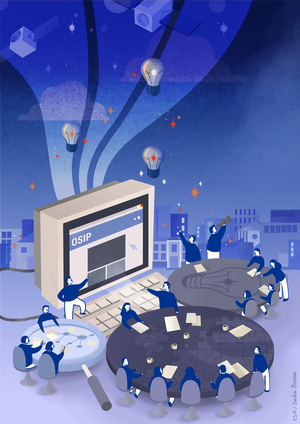Latest report on space junk
ESA’s Annual Space Environment Report is full of facts, figures and tables that provide a detailed picture of how the space debris environment around Earth has evolved.
Space debris includes all human-made, non-functioning objects in orbit around Earth, some of which regularly re-enter the atmosphere. As of the end of 2017, it was determined that 19 894 bits of space junk were circling our planet, with a combined mass of at least 8135 tonnes – that’s more mass than the entire metal structure of the Eiffel Tower.

The space age began on 4 October 1957 with the launch of Sputnik 1, Earth's first artificial satellite. Ever since, the amount of debris in orbit has steadily increased, initially due to discarded rocket upper stages and defunct satellites left adrift in orbit, and later due to small bits generated by explosions, expended fuel and even collisions.
ESA’s annual report on space debris not only looks at how the space environment has evolved in the past year but also at how it has changed since we first sent rockets and their satellite payloads into the heavens.
These ghosts of past scientific endeavours continue to haunt Earth’s environment; on occasion, some smash into each other in orbit, creating ever more fragments with the potential to do further damage to active missions. Eventually some debris pieces will re-enter the atmosphere, and while the smaller pieces will burn up, larger pieces have the potential to crash land on the Earth surface, potentially near populated areas.

This year’s report includes how the number of objects, their total mass and the area they cover has changed over time until 2017 – and it may come as no surprise that in each of these measures the numbers are increasing.
Just over 60-years into the space age, we have begun implementing ‘End-of-Life’ options for the instruments we propel from Earth into orbit. This includes ESA’s Clean Space Initiative that is currently looking at ways of cleaning up our space environment, as well as preventing this build-up of space junk in the first place.
The Annual Space Environment Report provides the information needed to inform technical policymakers, designers and manufacturers, to help prevent the future creation of additional debris.
As vast and empty as space may be, it is not an infinite resource. With the rapid development and deployment of small and increasingly accessible technologies such as CubeSats, space near us is filling up. To continue operating and benefiting from satellites and instruments in orbit around our planet, we need to look after and clean up, our space environment to ensure future sustainability.
Access ESA’s 2017 Annual Space Environment Report.















 Germany
Germany
 Austria
Austria
 Belgium
Belgium
 Denmark
Denmark
 Spain
Spain
 Estonia
Estonia
 Finland
Finland
 France
France
 Greece
Greece
 Hungary
Hungary
 Ireland
Ireland
 Italy
Italy
 Luxembourg
Luxembourg
 Norway
Norway
 The Netherlands
The Netherlands
 Poland
Poland
 Portugal
Portugal
 Czechia
Czechia
 Romania
Romania
 United Kingdom
United Kingdom
 Slovenia
Slovenia
 Sweden
Sweden
 Switzerland
Switzerland


































